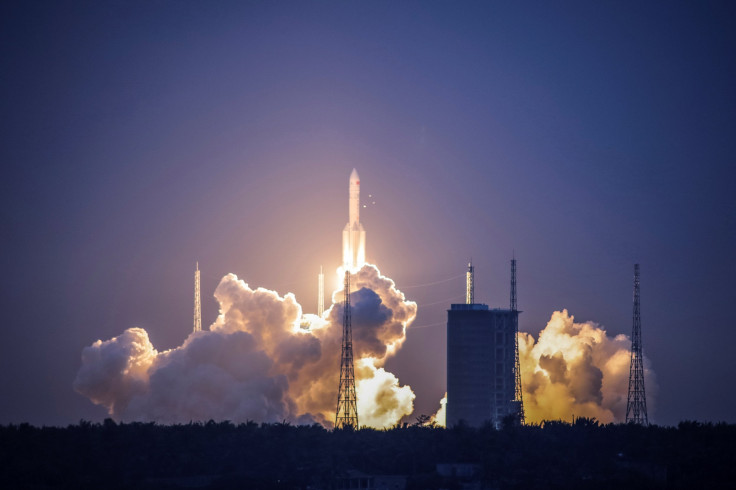China Space Program Is Ambitious, But Long March-5 Launch Failure Could Affect Plans

In the last few years, China has made big strides in many fields, becoming a force to reckon with in terms of economic, political and military might. And while many other countries still perceive it to be a place where there is no real technological innovation — even as it produces the bulk of the world’s technological gadgets — the nation has made significant advances in its indigenously developed and highly ambitious space program.
China wants to build its own orbiting laboratory along the lines of the International Space Station (ISS), become the first country to soft-land a probe on the far side of the moon, return lunar samples to Earth, send a crewed mission to the moon, and launch probes to study other planets in the solar system. At least some of these plans depend on a rocket called Long March-5, which was first launched successfully in November 2016. However, the second attempt Sunday was a failure.
Read: China Brings Electronic Propulsion To Satellite With Ion Thrusters
The rocket, which can carry 25 tons of payload to low-Earth orbit — only slightly less than the 28-ton capacity of Delta IV Heavy, currently the world’s most powerful rocket — took off Sunday evening from the Wenchang Space Launch Center in South China’s Hainan Province but malfunctioned minutes later. The cause behind the “anomaly” was being investigated, according to Xinhua News Agency.
The launch was to carry the Shijian-18 communications satellite, which is the first that uses an experimental technology to provide more power and higher data throughput. It also houses a laser communications instrument, and uses the country’s newly developed ion thrusters that were first used successfully on Shijian-13 when it was launched in April.
Sunday’s failure of the Long March-5 casts a shadow over the rocket’s November launch, scheduled to put the Chang’e-5 lunar probe on the moon’s surface. In what would be China’s fourth lunar mission, Chang’e-5 is meant to return lunar samples to Earth — a first for China, and the first such human endeavor since the former Soviet Union’s Luna 24 in 1976.
Read: Chinese Astronauts Spend Time In Fake Lunar Colony For Moon Mission Simulation
The heavy-lift rocket is also planned to be used for launching China’s Mars rover, scheduled for some time in the mid-2020s. The rocket is also supposed to launch the components — in three separate payloads, each exceeding 20 tons — of the country’s Tiangong mission. Literally meaning “heavenly palace,” Tiangong is the country’s ambitious space station project. The Tianhe-1 module, which resembles the ISS’ Zvezda Service Module, is designed to be the main living quarters and control center for the station’s crew, and is scheduled for lift-off in 2018.
Tiangong-2 is China’s second space station module, and has been in orbit since September 2016. It was supposed to dock with the previously launched Tiangong-1 and other components, such as Tianhe-1, to make up Tiangong-3, the space lab that China had in mind. But Tiangong-1 malfunctioned and is expected to fall back into Earth later this year, with the exact time and place not yet known. The country also successfully docked Tianzhou-1, its first cargo spacecraft which also has refueling ability, with Tiangong-2 in April.
© Copyright IBTimes 2024. All rights reserved.




















